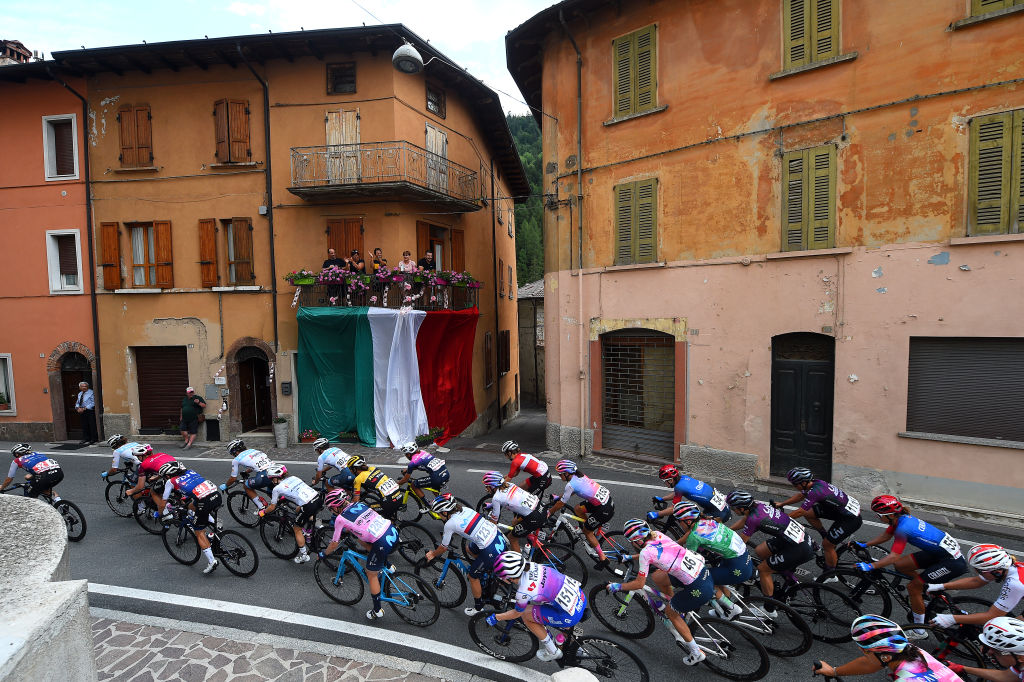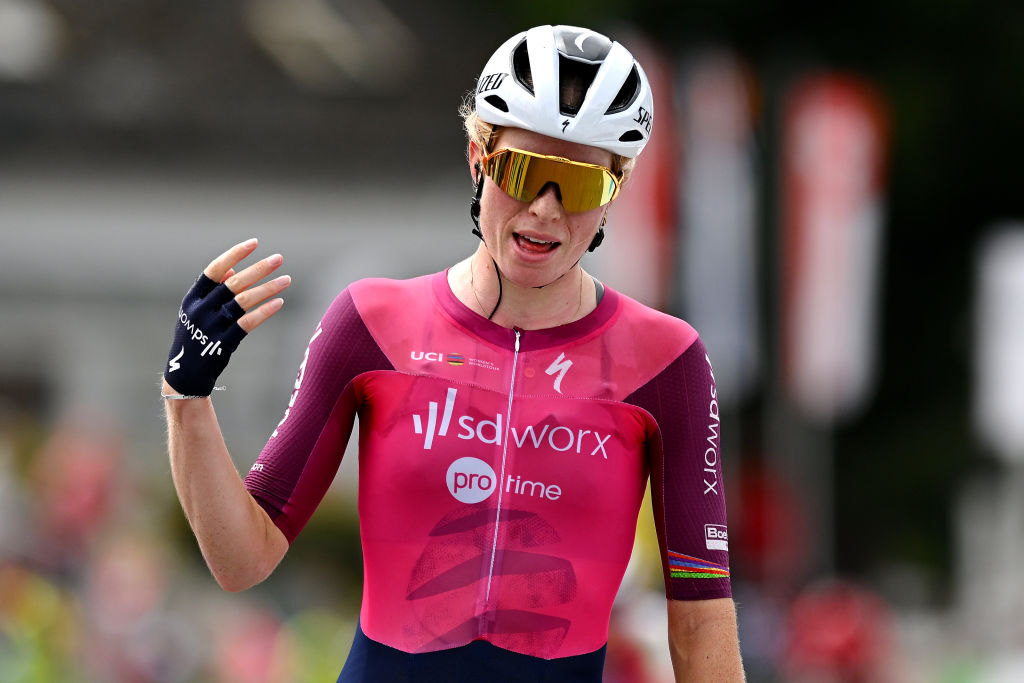
Although the Giro d'Italia is the longest-running women’s Grand Tour on the calendar, with 34 editions to date, it has failed to move with the times in recent years. Before the advent of the Tour de France Femmes, the Giro was the most prestigious women’s stage race on the calendar purely by virtue of being the longest and most challenging. The fluctuating fortunes of the Giro have now taken a positive turn with a fresh name, proof of advanced planning and a testing course.
Previously, the poor level of organisation of the race was something of a running joke in the peloton. After the introduction of mandatory live coverage for Women’s WorldTour events in 2020 and the Giro organisers failing to comply, the race was subsequently relegated to 2.Pro level in 2021.
After that, the race was taken over by new organisers who marginally improved the state of the race and its coverage, but many of the same issues remained. Getting hold of any information – let alone a full route – more than a few weeks in advance of the race was unheard of, and the possibility of live images still felt like it was hanging in the balance. Now, men’s Giro d’Italia organisers, RCS Sport, have taken over the women’s race and will run the show from 2024 with a fresh name, the Giro d’Italia Women.
RCS already announced the route for the 2024 Giro d’Italia Women on Tuesday. It is a varied and challenging parcours that is better than many would have dared hope for.
Time trial offers Olympics preparation

The race begins with a 14.6 km individual time trial around the city of Brescia in the Lombardy region. The women’s Giro in its various iterations has traditionally opened with a team or individual time trial over the years but an ITT of this length is a new addition that will be welcomed by the specialists.
Time trials were starting to become a rare beast on the women’s calendar for a while but with the Tour de France Femmes avec Swift adding one in 2023, and now the Giro, there is an opportunity for those who excel against the clock to have their moment – and a necessity for those who want to contend for the GC to polish their time trial skills.
The route is relatively flat but there is still the possibility for some to lose time across the 14.6km course meaning that there could be gaps between GC contenders at the end of the day. Anyone hoping to take time back will have to wait until the summit finish on stage three before they are able to rectify any mistakes.
Additionally, anyone looking to target the individual time trial at the Paris 2024 Olympics a few weeks later may use this opening stage as a late test before that race.
Something for everyone
With an opening individual time trial, one or two opportunities for the sprinters, and a few rolling stages before a weekend finale in the mountains, the Giro d’Italia women has a varied parcours that will keep the race open until the queen stage.
Indeed, the structure of the race is reminiscent of the first edition of the Tour de France Femmes with a course that progresses in difficulty, culminating in a double-mountain weekend.
After navigating the individual time trial, GC contenders need only to stay out of trouble for the next few stages before the race reaches the mountains. For sprinters, there are opportunities for stage wins on stages 2 and 5, while punchier riders – or breakaways – will have their moment on stages 3, 4 and 6.
The back-loaded parcours means that the tension of the GC race will endure until the final weekend, while others battle it out for stage wins in the days before. Sprinters like Lorena Wiebes or punchy, fast-finishing riders like Lotte Kopecky will thrive on those earlier stages while opportunists will be looking at the profile of stage 6 for a chance to slip away from the bunch and to a stage win.
Challenging climbs

The Giro Rosa featured some of Italy’s most iconic climbs before, such as the Zoncolan in 2018, and RCS have not shied away from challenging the riders in their first edition of the race.
Starting with stage 7, the penultimate stage of the race, this queen stage is a relentless 123km route through the Apennines in the centre of Italy featuring two category 1 climbs along the way. The first, Passo Lanciano, comes midway through the stage and anyone who has survived its slopes will then have to contend with a summit finish atop the Blockhaus, a brutal 13.9km at 8.4%.
The climb has never featured in the women’s Giro before and was most recently used in the men’s in 2022 where eventual GC winner, Jai Hindley, catapulted himself up the GC standings after taking the stage win – and there will be plenty of women hoping to achieve a similar feat on the penultimate stage next July. The attritional parcours of the stage and the steep slopes on Blockhaus lend themselves to the pure climbers and set the scene for a GC showdown.
If the overall isn’t already decided by the end of stage 7 then there is plenty of room for fireworks on stage 8. The final stage of the race is another brutal day with 2,500m of elevation across 109km. Anyone hoping for a last-ditch attempt to make up time only has until 80km to go to do so, as the summit of the category 1 Castel Del Monte is followed by a long descent towards the finish. Some may lose time on this final day but it will be very difficult to gain.
When the Tour de France Femmes parcours in 2022 featured a similar back-to-back final weekend it backfired somewhat as Annemiek van Vleuten sailed away from her competitors mid way through stage 7 and sealed the GC there and then. While Van Vleuten, who is now retired, won’t be at the race, Demi Vollering, Van Vleuten’s successor in dominating the peloton, may well be. Should the Dutch rider opt to skip the Giro, however, as she did in 2023, then we are likely to see a far more open race.
We certainly can expect to see some of the sprinters pull the pin on the race before the final weekend as there is very little for them to stick around for.
Olympics build-up
The Giro d’Italia women will finish just three weeks before the road race at the Paris Olympic Games takes place. Although the punchy Paris course is very different to the likes of the Blockhaus climb, many will view the challenging route of the Giro as the perfect place to test their legs, and each other, before they fight for the gold medal. However, with the Tour de France Femmes avec Zwift coming just a little more than a week after the Olympic road race, those who are looking to peak for both events may choose to skip the Giro given the difficulty of maintaining form over such a long period.
The position of the Giro in the calendar has long been a point of contention, with the race usually coinciding with the men’s Tour de France and therefore receiving far less attention than it deserves. The 2024 race also coinciding with the men’s Tour and within such close proximity to both the Olympics and the Tour de France Femmes will likely raise the same questions again.
RCS’s first foray into organising the Giro d’Italia Women looks to have levelled up the race in terms of both planning and parcours. The bar was low enough, but knowing the parcours of the 2024 race as far in advance as December 2023 gives riders an opportunity to plan their seasons and train accordingly.
One worry of the men’s Giro organisers taking over the race was that they may water down the difficulty of the route, but quite the opposite has proven true. Despite cutting the race down by two stages, the trade off is the increased quality of the parcours and level of professionalism offered by RCS.







